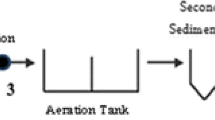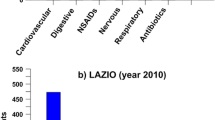Abstract
The occurrence of thirty-one selected Endocrine Disrupting Compounds (EDCs) and Pharmaceuticals and Personal Care Products (PPCPs) was analyzed in eleven major municipal Wastewater Treatment Plants (WWTPs) in Seoul, Korea over two consecutive days. The area was selected since there was a lack of information in the Seoul area on the suspected contamination of wastewater effluents by micropollutants. Discharge from those major WWTPs accounted for approximately 25% of the Han River flow where over 99% of drinking water is produced from surface waters in this area that has a population approximately 15 million inhabitants. Samples collected in WWTP effluents were analyzed by Liquid Chromatography with tandem Mass Spectrometry (LC-MS/MS) with Electrospray Ionization (ESI) and Atmospheric Pressure Chemical Ionization (APCI). Many target compounds were detected in the effluent samples (66%). Atenolol, iopromide, TCPP, TCEP, musk ketone, naproxen, DEET, carbamazepine, trimethoprim, sulfamethoxazole, and benzophenone were frequently detected in effluent samples with mean concentrations ranging from 98 to 663 ng/L (maximum = 230–1,700 ng/L). However, the steroid hormones (17 α-ethynylestradiol, progesterone, and testosterone), atrazine (herbicide), and octylphenol (surfactant) were not detected in all the samples. Results of this study can provide evidence that WWTP effluent is one of the major sources contaminating the Han River.
Similar content being viewed by others
References
Asakura, H., Matsuto, T., and Tanaka, N. (2004). “Behavior of endocrine-disrupting chemicals in leachate from msw landfill sites in Japan.” Waste Management, Vol. 24, No. 6, pp. 613–622.
Ashton, D., Hilton, M., and Thomas, K. V. (2004). “Investigating the environmental transport of human pharmaceuticals to streams in the united kingdom.” Science of the Total Environment, Vol. 333, Nos. 1–3, pp. 167–184.
Barnes, K. K., Christenson, S. C., Kolpin, D. W., Focazio, M., Furlong, E. T., and Zaugg, S. D. (2004). “Pharmaceuticals and other organic waste water contaminants within a leachate plume downgradient of a municipal landfill.” Ground Water Monitoring and Remediation, Vol. 24, No. 2, pp. 119–126.
Baronti, C., Curini, R., D’Ascenzo, G., Di Corcia, A., Gentili, A., and Samperi, R. (2000). “Monitoring natural and synthetic estrogens at activated sludge sewage treatment plants and in a receiving river water.” Environmental Science & Technology, Vol. 34, No. 24, pp. 5059–5066.
Behnisch, P. A., Fujii, K., Shiozaki, K., Kawakami, I., and Sakai, S. (2001). “Estrogenic and dioxin-like potency in each step of a controlled landfill leachate treatment plant in Japan.” Chemosphere, Vol. 43, Nos. 4–7, pp. 977–984.
Boyd, G. R. and Grimm, D. A. (2001). “Occurrence of pharmaceutical contaminants and screening of treatment alternatives for southeastern Louisiana.” Proceedings of Annals of the New York Academy of Sciences, Environmental hormones, the scientific basis of endocrine disruption Ann, New York Academy of Sciences, New York, p. 80–89.
Boyd, G. R., Reemtsma, H., Grimm, D. A., and Mitra, S. (2003). “Pharmaceuticals and Personal Care Products (PPCPs) in surface and treated waters of Louisiana, USA and Ontario, Canada.” Science of the Total Environment, Vol. 311, Nos. 1–3, pp. 135–149.
Conn, K. E., Barber, L. B., Brown, G. K., and Siegrist, R. L. (2006). “Occurrence and fate of organic contaminants during onsite wastewater treatment.” Environmental Science & Technology, Vol. 40, No. 23, pp. 7358–7366.
Daughton, C. G. and Ternes, T. A. (1999). “Pharmaceuticals and personal care products in the environment: Agents of subtle change?” Environmental Health Perspectives, Vol. 107,Suppl. 6, pp. 907–938.
Fono, L. J., Kolodziej, E. P., and Sedlak, D. L. (2006). “Attenuation of wastewater-derived contaminants in an effluent-dominated river.” Environmental Science & Technology, Vol. 40, No. 23, pp. 7257–7262.
Glassmeyer, S. T., Furlong, E. T., Kolpin, D. W., Cahill, J. D., Zaugg, S. D., and Werner, S. L., (2005). “Transport of chemical and microbial compounds from known wastewater discharges: Potential for use as indicators of human fecal contamination.” Environmental Science & Technology, Vol. 39, No. 14, pp. 5157–5169.
Guillette Jr., L. J., Gross, T. S., Masson, G. R., Matter, N. M., Percival, H. F., and Woodward, A. R. (1994). “Developmental abnormalities of the gonad and sex hormone concentrations in juvenile alligators from contaminated and control lakes in Florida.” Environmental Health Perspectives, Vol. 102, No. 8, pp. 680–688.
Guillette Jr., L. J., Pickford, D. B., Crain, D. A., Rooney, A. A., and Percival, H. F. (1996). “Reduction in penis size and plasma testosterone concentrations in juvenile alligators living in a contaminated environment.” General and Comparative Endocrinology, Vol. 101, No. 1, pp. 32–42.
Halling-Sorensen, B., Nielsen, S. N., Lanzky, P. F., Ingerslev, F., Lutzhoft, H. C. H., and Jorgensen, S. E. (1998). “Occurrence, fate and effects of pharmaceutical substances in the environment - A review.” Chemosphere, Vol. 36, No. 2, pp. 357–393.
Hayes, T. B., Collins, A., Lee, M., Mendoza, M., Noriega, N., and Stuart, A. A. (2002). “Hermaphroditic, demasculinized frogs after exposure to the herbicide atrazine at low ecologically relevant doses.” Proceedings of the National Academy of Sciences of the United States of America, Vol. 99, No. 8, pp. 5476–5480.
Janex-Habibi, M. L., Huyard, A., Esperanza, M., and Bruchet, A. (2009). “Reduction of endocrine disruptor emissions in the environment: The benefit of wastewater treatment.” Water Research, Vol. 43, No. 6, pp. 1565–1576.
Jobling, S., Noylan, M., Tyler, C. R., Brighty, G., and Sumpter, J. P. (1998). “Widespread sexual disruption in wild fish.” Environmental Science & Technology, Vol. 32, No. 17, pp. 2498–2506.
Kim, S. D., Cho, J., Kim, I. S., Vanderford, B. J., and Snyder, S. A. (2007). “Occurrence and removal of pharmaceuticals and endocrine disruptors in south Korean surface, drinking, and waste waters.” Water Research, Vol. 41, No. 5, pp. 1013–1021.
Kolpin, D. W., Furlong, E. T., Meyer, M. T., Thurman, E. M., Zaugg, S. D., and Barber, L. B. (2002). “Pharmaceuticals, hormones, and other organic waste contaminants in U.S. Streams, 1999–2000: A national reconnaissance.” Environmental Science & Technology, Vol. 36, No. 6, pp. 1202–1211.
Kolpin, D., Skopec, M., Meyer, M. T., Furlong, E. T., and Zaugg, S. D. (2004). “Urban contribution of pharmaceuticals and other organic wastewater contaminants to streams during differing flow conditions.” Science of the Total Environment, Vol. 328, Nos. 1–3, pp. 119–130.
Lindqvist, N., Tuhkanen, T., and Kronberg, L. (2005). “Occurrence of acidic pharmaceuticals in raw and treated sewages and in receiving waters.” Water Research, Vol. 39, No. 11, pp. 2219–2228.
Nakada, N., Tanishima, T., Shinohara, H., Kiri, K., and Takada, H. (2006). “Pharmaceutical chemicals and endocrine disrupters in municipal wastewater in Tokyo and their removal during activated sludge treatment.” Water Research, Vol. 40, No. 17, pp. 3297–3303.
Polyak, D. E. and Virta, R. L. (2007). Minerals yearbook, The United States Geological Survey.
Putschew, A., Schittko, S., and Jekel, M. (2001). “Quantification of triiodinated benzene derivatives and x-ray contrast media in water samples by liquid chromatography-electrospray tandem mass spectrometry.” Journal of Chromatography A, Vol. 930, Nos. 1–2, pp. 127–134.
Snyder, S. A., Leising, J., Westerhoff, P., Yoon, Y., Mash, H., and Vanderford, B. (2004). “Biological and physical attenuation of endocrine disruptors and pharmaceuticals: Implications for water reuse.” Ground Water Monitoring and Remediation, Vol. 24, No. 2, pp. 108–118.
Snyder, S. A., Vanderford, B. J., Drewers, J., Dickenson, E., and Snyd, E. M. (2008). State of knowledge of endocrine disruptors and pharmaceuticals in drinking water, American Water Works Association Research Foundation, Denver.
Snyder, S., Wert, E., Lei, H., Westerhoff, P., and Yoon, Y. (2007). Removal of EDCs and pharmaceuticals in drinking and reuse treatment processes, American Water Works Association Research Foundation.
Snyder, S. A., Westerhoff, P., Yoon, Y., and Sedlak, D. L. (2003). “Pharmaceuticals, personal care products, and endocrine disruptors in water: Implications for the water industry.” Environmental Engineering Science, Vol. 20, No. 5, pp. 449–469.
Stackelberg, P. E., Furlong, E. T., Meyer, M. T., Zaugg, S. D., Henderson, A. K., and Reissman, D. B. (2004). “Persistence of pharmaceutical compounds and other organic wastewater contaminants in a conventional drinking-water treatment plant.” Science of the Total Environment, Vol. 329, Nos. 1–3, pp. 99–113.
Stumm-Zollinger, E. and Fair, G. M. (1965). “Biodegradation of steroid hormones.” Journal of the Water Pollution Control Federation, Vol. 37, No. 11, pp. 1506–1510.
Trenholm, R. A., Vanderford, B. J., Holady, J. C., Rexing, D. J., and Snyder, S. A. (2006). “Broad range analysis of endocrine disruptors and pharmaceuticals using gas chromatography and liquid chromatography tandem mass spectrometry.” Chemosphere, Vol. 65, No. 11, pp. 1990–1998.
USEPA (2007). Special report on environmental endocrine disruption: An effect assessment and analysis, Office of Research and Development, Washington, D.C. EPA/630/R-96/012.
Vanderford, B. J., Rosario-Ortiz, F. L., and Snyder, S. A. (2007). “Analysis of p-chlorobenzoic acid in water by liquid chromatographytandem mass spectrometry.” Journal of Chromatography A, Vol. 1164, Nos. 1–2, pp. 219–223.
Vanderford, B. J. and Snyder, S. A. (2006). “Analysis of pharmaceuticals in water by isotope dilution liquid chromatography/tandem mass spectrometry.” Environmental Science & Technology, Vol. 40, No. 23, pp. 7312–7320.
Yamamoto, T., Yasuhara, A., Shiraishi, H., and Nakasugi, O. (2001). “Bisphenol a in hazardous waste landfill leachates.” Chemosphere, Vol. 42, No. 4, pp. 415–418.
Yoon, Y., Ryu, J., Oh, J., Choi, B. G., and Snyder, S. A. (2010). “Occurrence of endocrine disrupting compounds, pharmaceuticals, and personal care products in the Han River (Seoul, South Korea).” Science of the Total Environment. Vol. 408, No. 3, pp. 636–643.
Author information
Authors and Affiliations
Corresponding author
Rights and permissions
About this article
Cite this article
Ryu, J., Yoon, Y. & Oh, J. Occurrence of endocrine disrupting compounds and pharmaceuticals in 11 WWTPs in Seoul, Korea. KSCE J Civ Eng 15, 57–64 (2011). https://doi.org/10.1007/s12205-011-0913-6
Received:
Revised:
Accepted:
Published:
Issue Date:
DOI: https://doi.org/10.1007/s12205-011-0913-6




